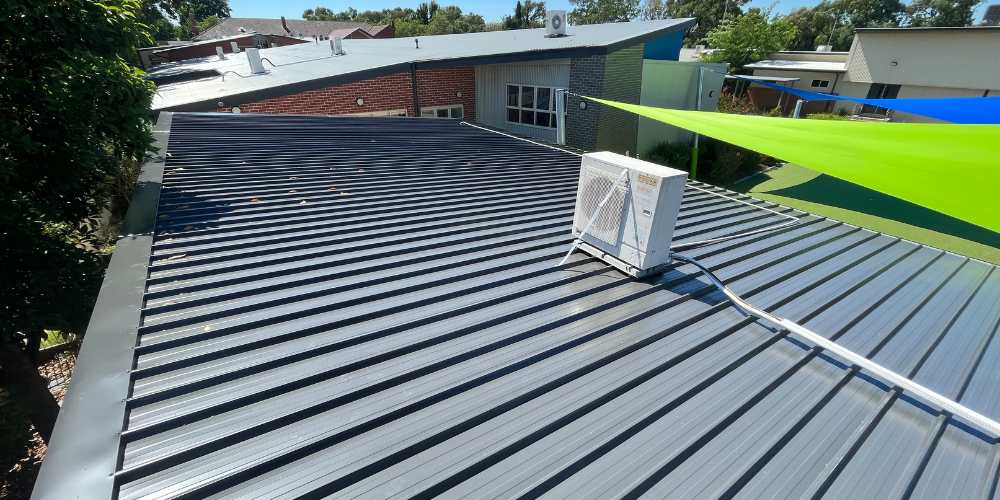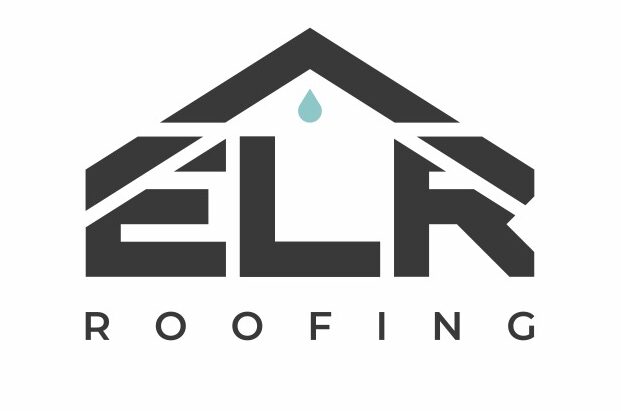Colorbond Roofing in Extreme Climates: How It Performs
Picture this: blazing sunbeams hammering down your roof, attempting to bake your house. Or you’re bracing yourself against howling winds, torrential rain, and even the rare hailstorm. These severe climates may put typical roofing materials to the test, resulting in costly repairs and frustrating maintenance.
But here’s where Colorbond roofs steps in. A versatile and high-performance roofing solution designed to endure even the harshest conditions. With its cutting-edge technology and a palette of vibrant colours, Colorbond isn’t just about aesthetics – it’s a practical choice that thrives in extreme climates.
Are you tired of dealing with harsh weather conditions that cause havoc on your roof? Mother Nature may be an overwhelming adversary, with scorching heat waves and persistent storms. But don’t worry, because today, we’re delving into Colorbond roofing to see how it stands up to nature’s worst elements.
Join us as we uncover the beauty of Colorbond roofing and why it’s the ultimate protection for your house in even the harshest circumstances. You won’t want to miss out on this!

Extreme Weather Climates To Consider When Choosing Roofing Types
It’s critical to consider the severe weather patterns in your location when selecting a roofing style. Different climatic conditions pose particular difficulties that affect the resilience and efficiency of your roof. Here are a few examples of harsh weather to think about:
Hot and Sunny Climates
Climates that are hot and bright pose particular difficulties for roofing. High temperatures and direct sunshine can accelerate the aging and degeneration of roofing materials. Constant exposure to UV radiation from the sun can cause things to deteriorate, fade, or break over time. It’s critical to select a roofing type that is intended to withstand these circumstances. Choosing heat-resistant materials that provide UV protection will help the roof last longer and keep its integrity.
Cold and Snowy Climates
Roofs in cold and snowy areas must endure subfreezing temperatures, significant snowfall, and the risk of ice dam development. Choosing a roofing material that can withstand these pressures is crucial since the weight of accumulated snow might strain the structure. To minimize water penetration, it is also important to prevent ice dams when melting snow refreezing at the roof’s edge. Look for roofing materials that can properly shed snow, have strong insulating qualities, and prevent the development of ice dams.
Coastal and Hurricane-Prone Climates
Roofs that can endure strong winds, exposure to seawater, and corrosive effects are necessary for coastal locations and places vulnerable to hurricanes or tropical storms. It’s critical to select a roofing type with great wind resistance since strong gusts have the potential to uplift or damage roofing materials. Additionally, coastal locations’ seawater can hasten corrosion. Therefore it is essential to use materials that can withstand rust and corrosion. In these severe weather circumstances, roofing systems with suitable installation methods and extra reinforcement can offer the required durability and protection.
Hail-Prone Climates
Hailstorms may seriously harm roofs, resulting in leaks and weakened structural integrity. Prioritizing impact resistance is essential when choosing a roofing material for areas where hail is common. Look for materials that are specially made to withstand different-sized hailstones. Even in severe hailstorms, impact-resistant roofing choices can reduce damage and increase the lifespan of your roof.
High-Rainfall or Monsoon Climates
Roofing materials that can efficiently withstand heavy precipitation and prevent water penetration are needed in areas with frequent monsoons or excessive rainfall. It’s critical to pick a roofing material with superior waterproofing properties and suitable drainage systems to manage high water pressure. To create a waterproof roof, look for materials with characteristics like sealants, underlayment, or suitable flashing elements that are particularly made to prevent water infiltration.

What Makes Colorbond Roofing Special During Extreme Climates ?
Due to its many benefits, colorbond roofing suits various weather and climatic circumstances. Here are some weather and environment examples where Colorbond roofing shines out:
Sun and Heat
Roofs made of Colorbond are made to resist hot, sunny weather. Its pre-painted steel design effectively reflects solar radiation, lowering heat absorption and maintaining a cooler interior. This promotes the maintenance of cozy interior temperatures and lessens the need for air conditioning, resulting in energy savings.
Moisture and Rain
Rain and moisture are well repelled by Colorbond roofing. Colorbond sheets’ interlocking profile stops water from penetrating, keeping the structure dry and preventing leaks. The strong corrosion resistance of Colorbond roofing makes it particularly ideal for places with significant rainfall or coastal areas, where exposure to seawater can hasten the degeneration of other roofing materials.
Storms and Winds
Strong winds and storms pose no problem for Colorbond roofing, which is highly wind and storm resistant. Because of its strong steel structure and interlocking layout, the roof system is secure and wind gust-resistant. For places vulnerable to hurricanes, cyclones, or other powerful wind occurrences, Colorbond roofing is a dependable option.
Cold and Snow
Durable Colorbond roofing can withstand harsh weather conditions, including heavy snowfall. Because of its strength and structural integrity, it can support the weight of accumulated snow without affecting the roof’s functionality. The thermal efficiency of Colorbond roofing also aids in preventing excessive heat loss, providing insulation in cold areas and perhaps lowering heating expenses.
Hail and Impact
Due to its impact resistance, Colorbond roofing is appropriate for areas that frequently experience hailstorms. As a result of its sturdy steel design, which can endure hailstone strikes without suffering major damage, there are fewer chances of leaks and fewer repairs or replacements being required.
Overall Resilience
Overall, Colorbond roofing is quite resilient due to its mix of toughness, resilience, and tolerance to diverse weather conditions. Extreme temperatures, UV rays, dampness, and harsh elements are all things it can tolerate, assuring long-term performance and lowering the need for regular maintenance and repairs.
Installation and Maintenance Tips of Colorbond Roofing
Here are some crucial suggestions to take into account when it comes to the installation and maintenance of Colorbond roofing:
- Hire Qualified Installers
Those with experience and training installing colorbond roofing should know about this material. They will guarantee suitable installation methods, which are essential for the functionality and lifespan of the roof and include the right flashing, fixing, and sealing. - Use Recommended Accessory
Specific accessories for Colorbond roofing are created to function well with the system. Use the ridge capping, valleys, flashings, and other recommended accessories the manufacturer has given. This guarantees compatibility and aids in preserving the roof’s structural integrity. - Follow Manufacturer Guidelines
When installing Colorbond roofing, always refer to the manufacturer’s installation recommendations and instructions. These recommendations include precise information on proper installation techniques, suggested fasteners, sealants, and other crucial factors. - Allow for Thermal Expansion
A Colorbond roof stretches and shrinks as a result of temperature changes. Installers should make adequate expansion gaps and adhere to the manufacturer’s instructions. This prevents tension or harm to the roof from being placed on the roofing as it adjusts.
- Regular Inspections
Check your Colorbond roof regularly for any deterioration, such as loose or broken sheets, rust marks, or debris buildup. Regular inspections enable early issue identification, preventing problems from escalating over time. - Keep Gutters and Drains Clear
Ensure no blockages, such as leaves or debris, are in the gutters, downpipes, or drains. This stops water from accumulating and perhaps leads to leaks or harm to the roofing system.
Clean the Roof
Clean your Colorbond roof occasionally to eliminate any organic waste, grime, or debris that may have accumulated over time. Use a soft-bristle brush or low-pressure water to avoid harming or scratching the surface. - Preventive Maintenance
To increase the longevity and weather resistance of the Colorbond roofing, consider using the protective coatings or sealants the manufacturer suggests. If you want to know if such remedies are required and suitable for your situation, speak with roofing experts. - Address Problems Right Away
When doing routine maintenance or inspections, take immediate action if any damage or problems are found. Delaying repairs might result in future damage and more involved fixes.
No, Colorbond roofing doesn’t naturally make noise when it rains. Compared to other roofing materials, it may reduce the sound of rain when fitted with the right insulation and underlayment.
Colorbond roofing may improve energy efficiency. The need for excessive heating or cooling is decreased because of its thermal efficiency in regulating temperature. This may lead to possible energy savings and enhanced indoor comfort.
A key feature of Colorbond roofing is its extreme corrosion and rust resistance. It goes through a rigorous production process in which the steel is coated with a protective layer, making it extremely sturdy and long-lasting even under adverse weather conditions.
It is possible to put solar panels on Colorbond roofing. Solar panel mounting may be done on the stable and level surface of Colorbond roofing. It is crucial to seek advice from solar panel installers who can guarantee correct installation procedures and preserve the roof’s structural integrity.
The numerous benefits of Colorbond roofing make it a popular option for residential and commercial structures. It is suited for various weather and climatic circumstances because of its unique properties, including durability, a large selection of colour possibilities, thermal efficiency, and low maintenance needs.
While Colorbond roofing provides remarkable adaptability to various weather and climatic situations, an appropriate installation by qualified experts is essential to maximize its performance. Consultation with local roofing specialists knowledgeable about your area’s weather patterns may offer insightful advice and guarantee that Colorbond roofing is done appropriately for maximum resistance and security.
